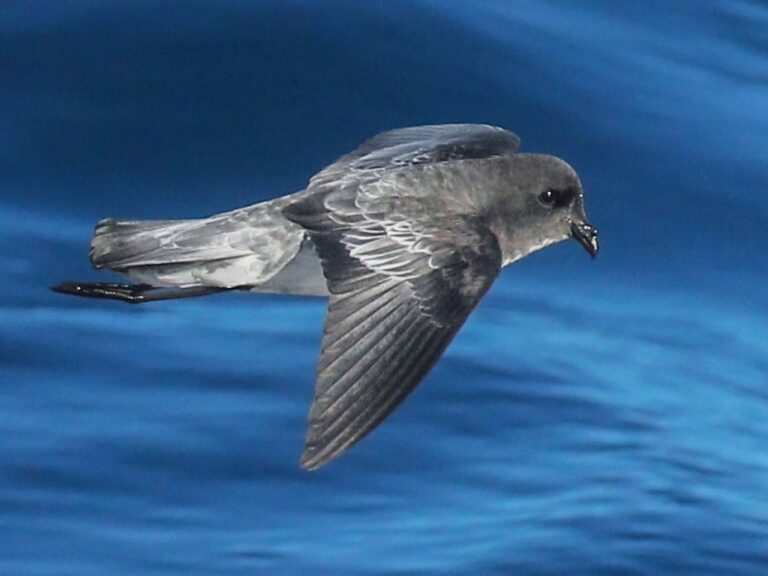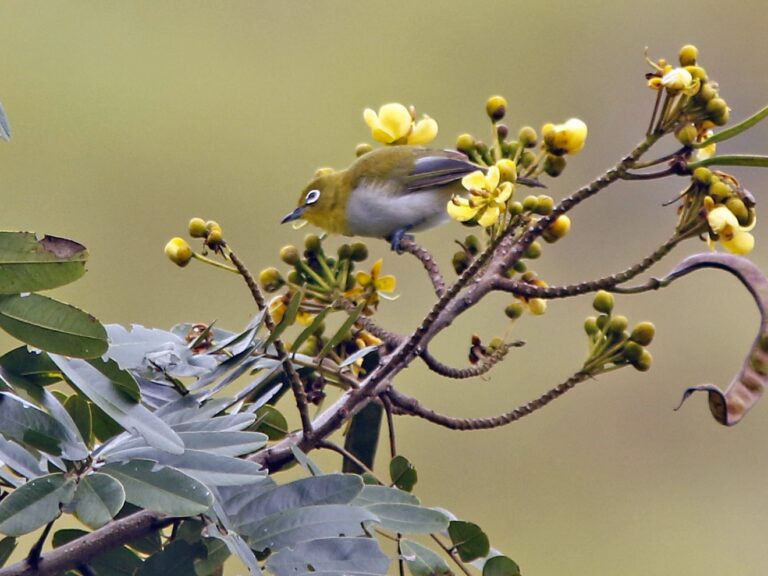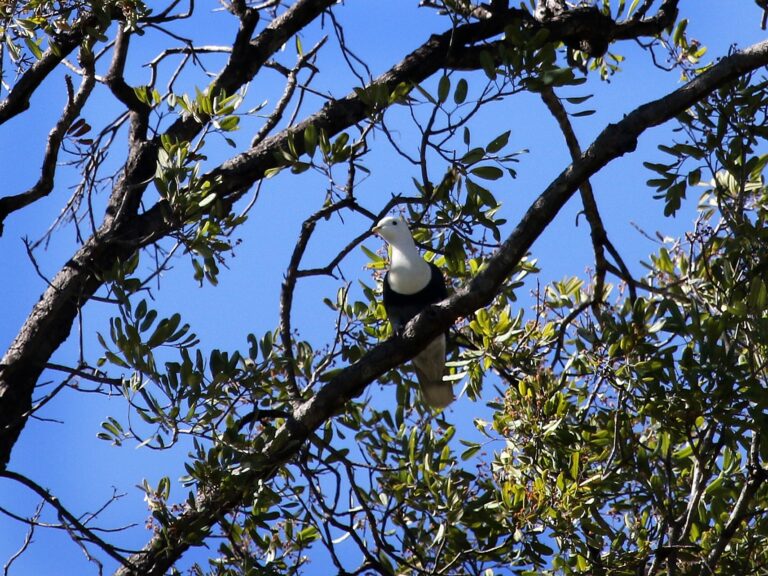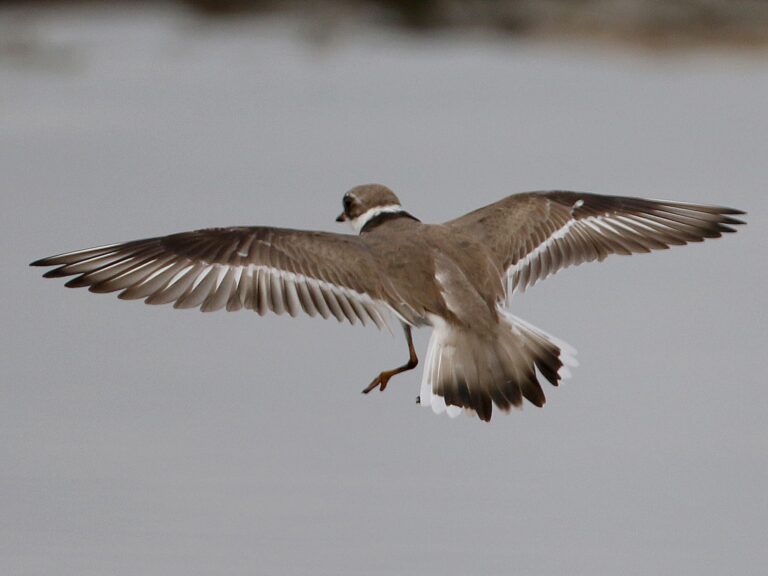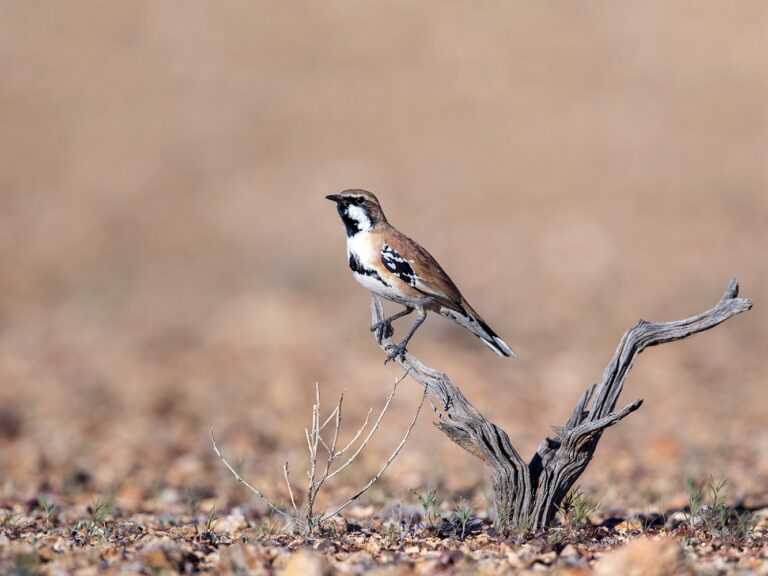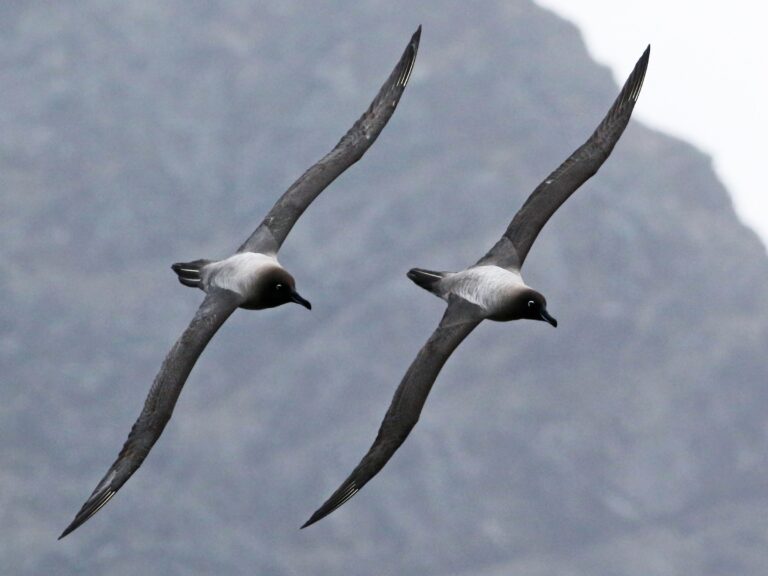Southern Royal Albatross: A Comprehensive Overview of Their Habitat and Conservation Status
The Southern Royal Albatross, known scientifically as Diomedea epomophora, is one of the largest seabirds, famous for its impressive wingspan and remarkable flying abilities.
These magnificent birds typically breed on remote islands in New Zealand, making them a key species in the region’s marine ecology.
Their unique adaptations and behaviors not only fascinate bird watchers but also highlight the importance of conservation efforts to protect their habitats.
These albatrosses are striking in appearance, with white plumage and long, slender wings that allow them to glide effortlessly over the ocean.
The Southern Royal Albatross primarily feeds on fish and squid, showcasing its impressive foraging skills.
It plays a vital role in maintaining the balance of marine life in its ecosystem, thus underscoring the need for awareness about their conservation status.
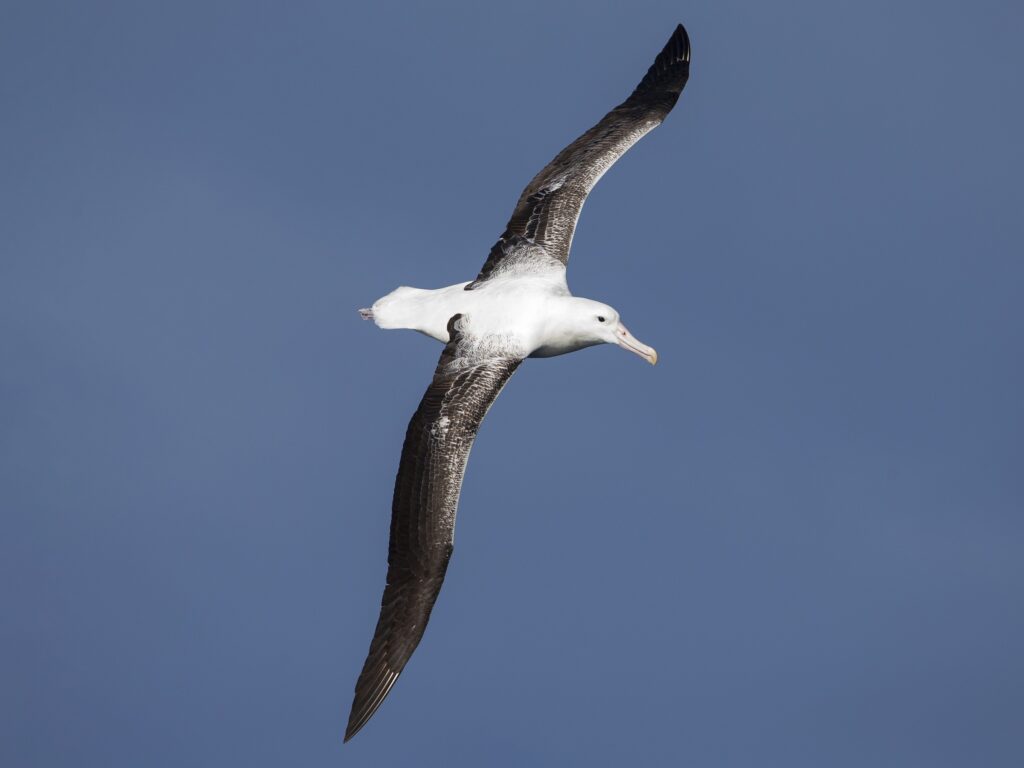
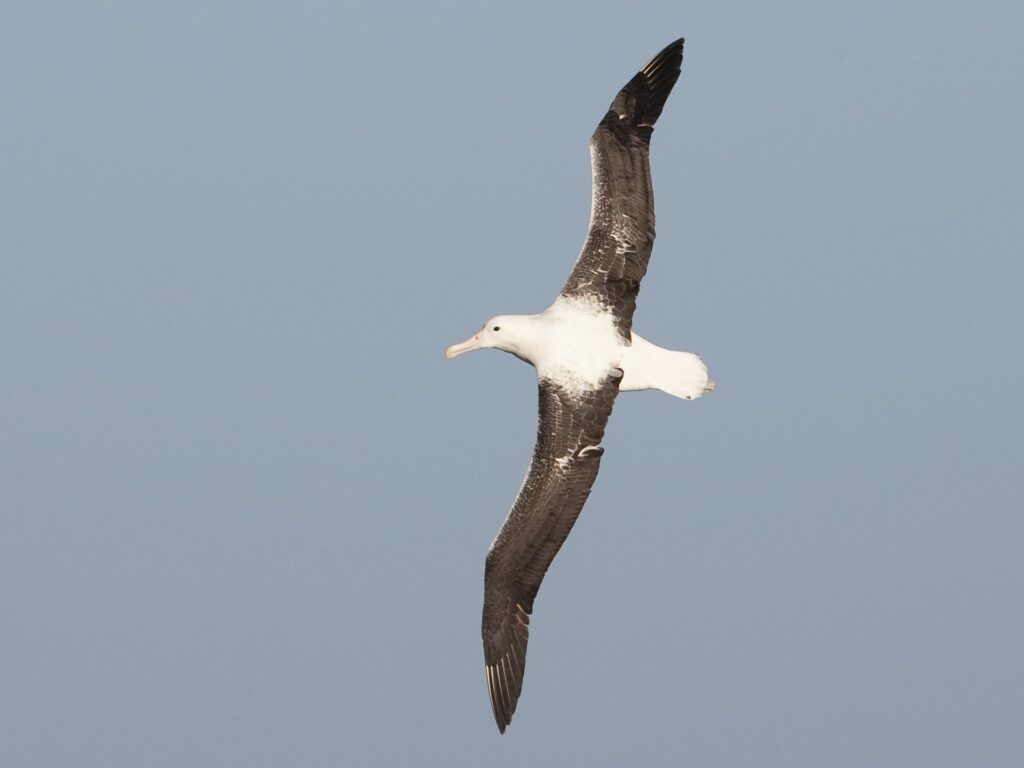
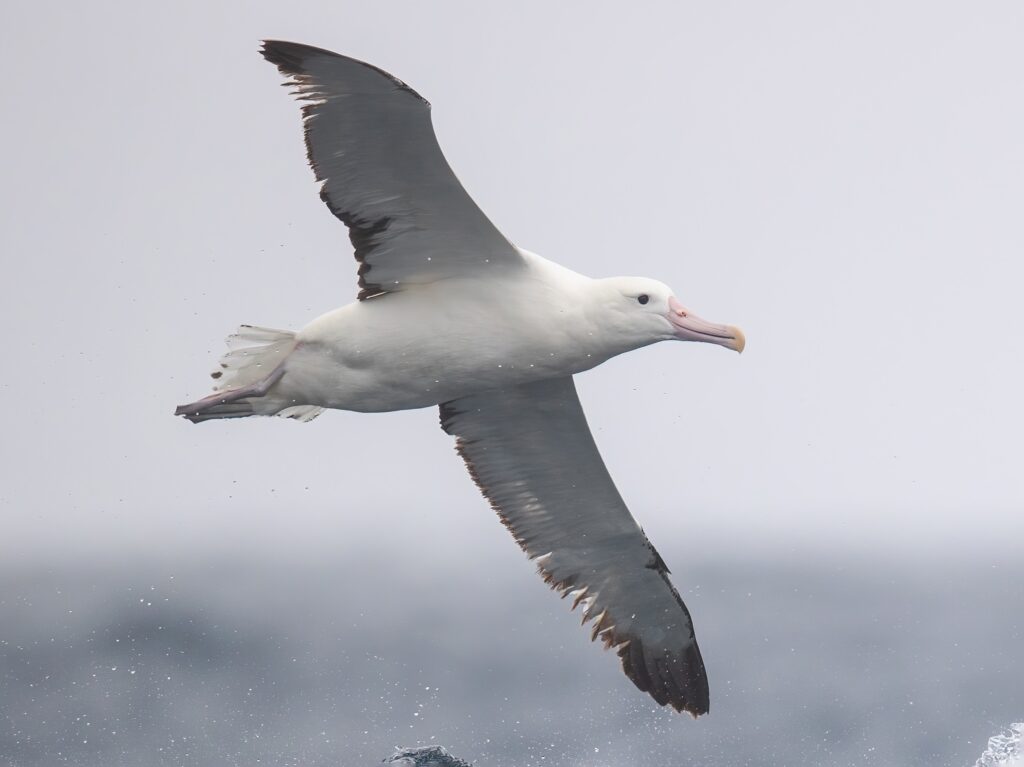
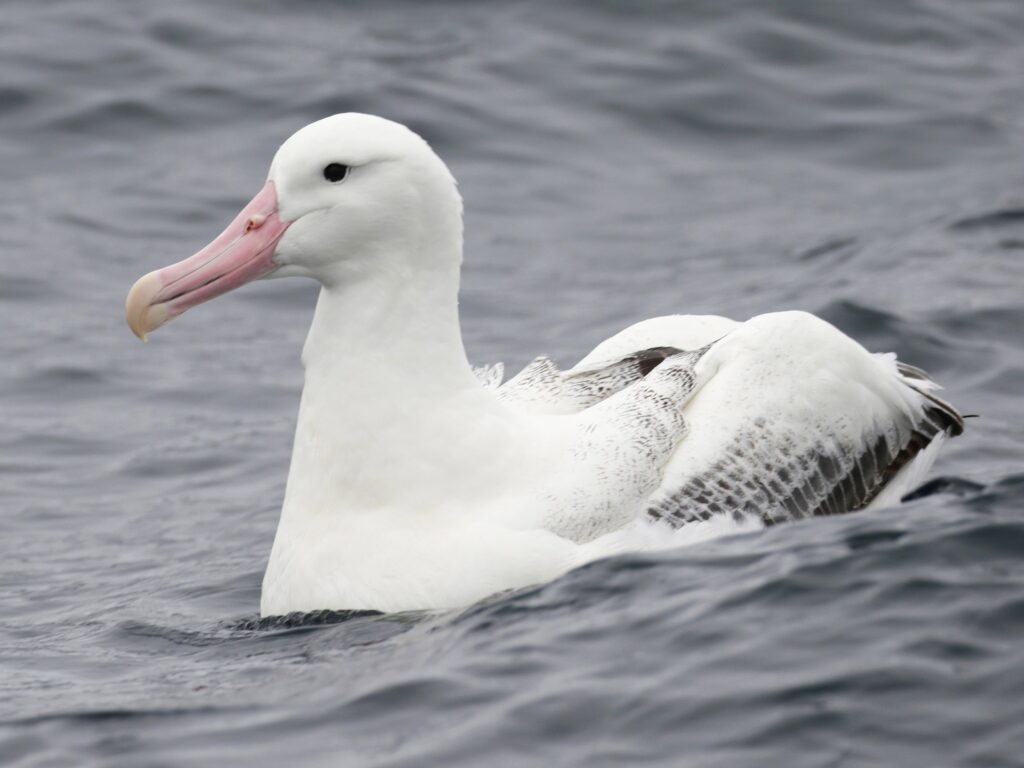
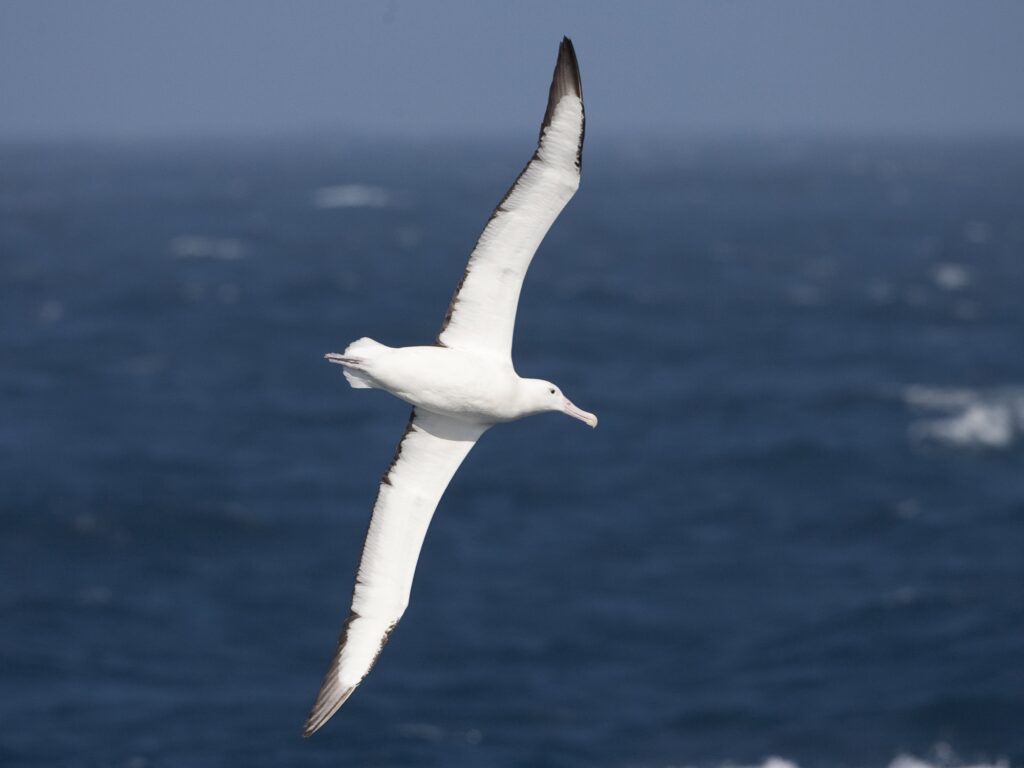
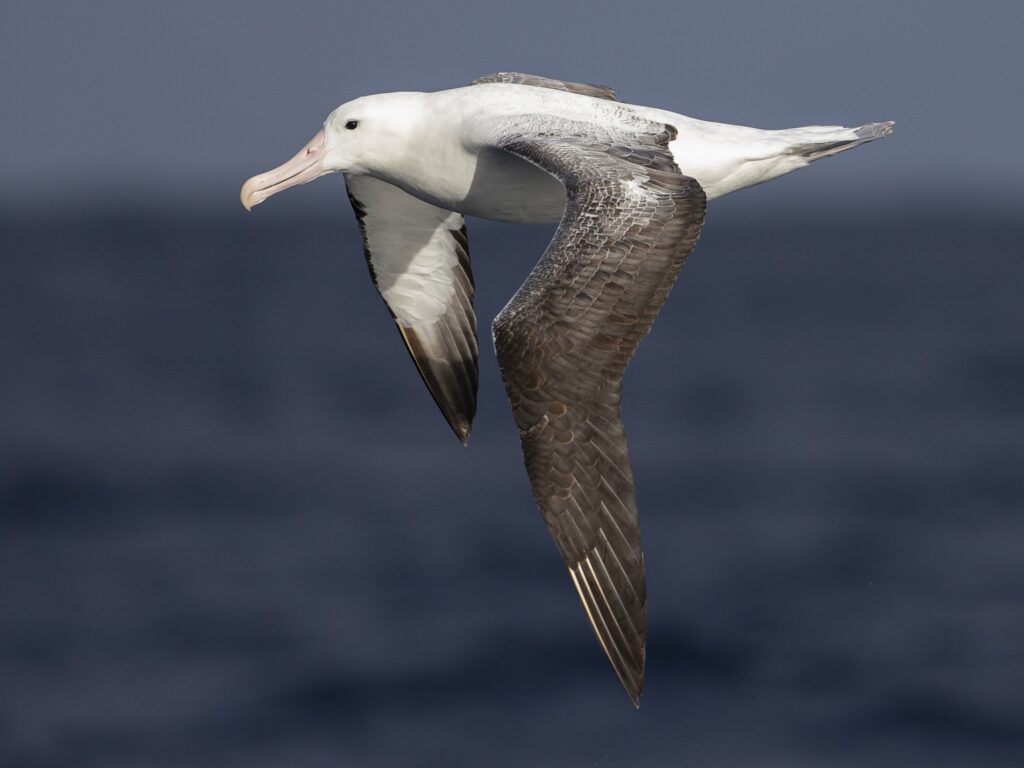
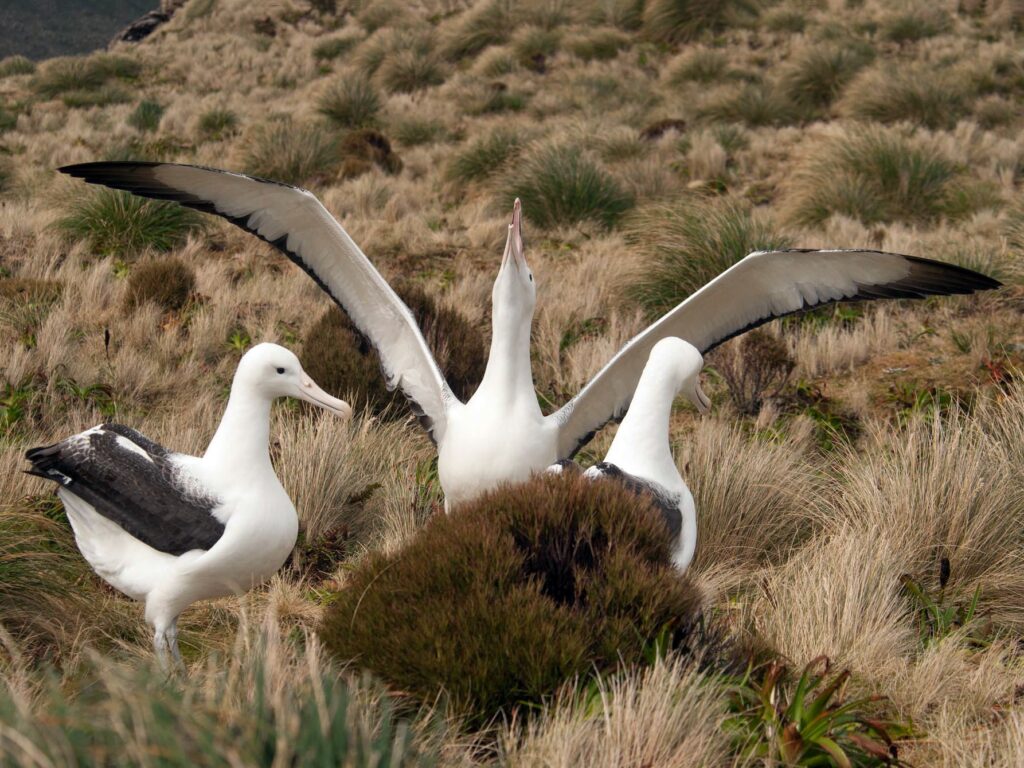
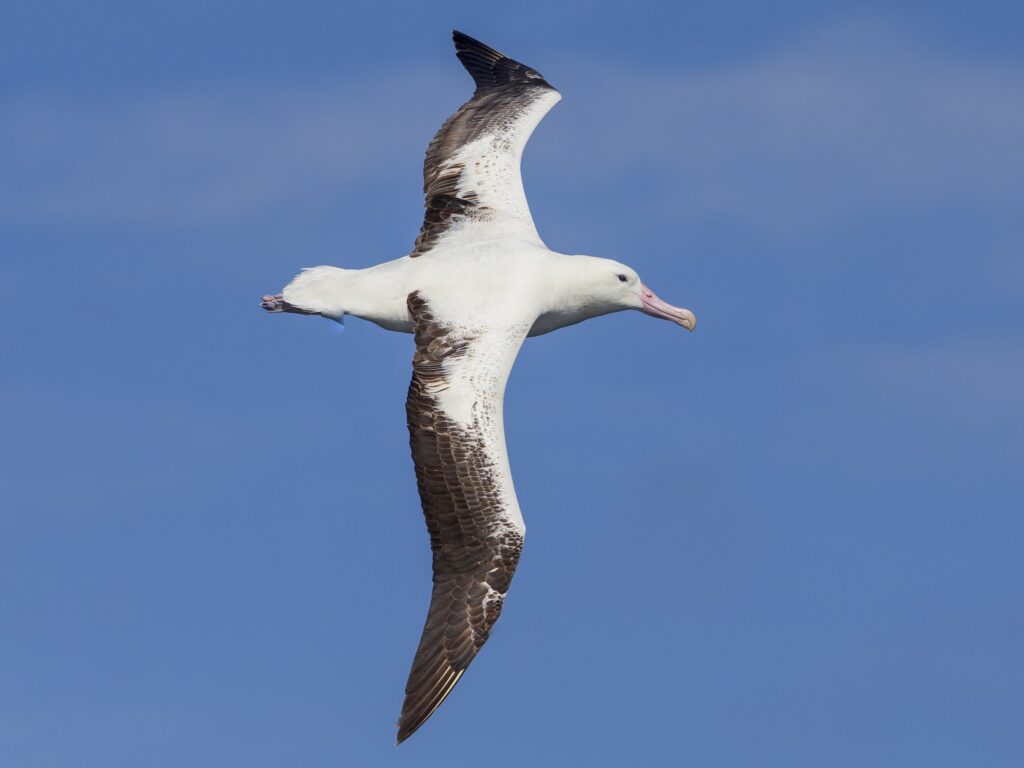
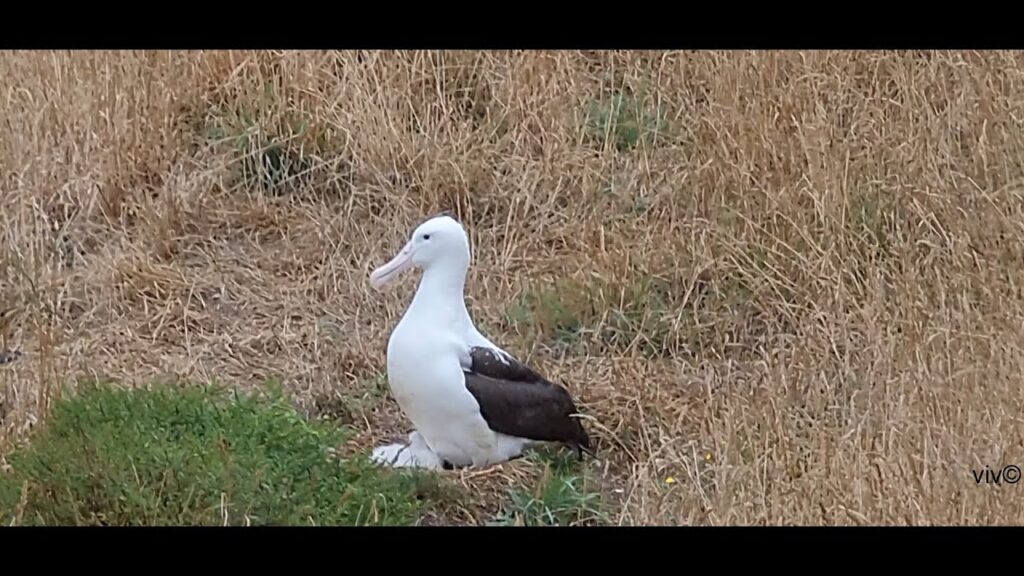
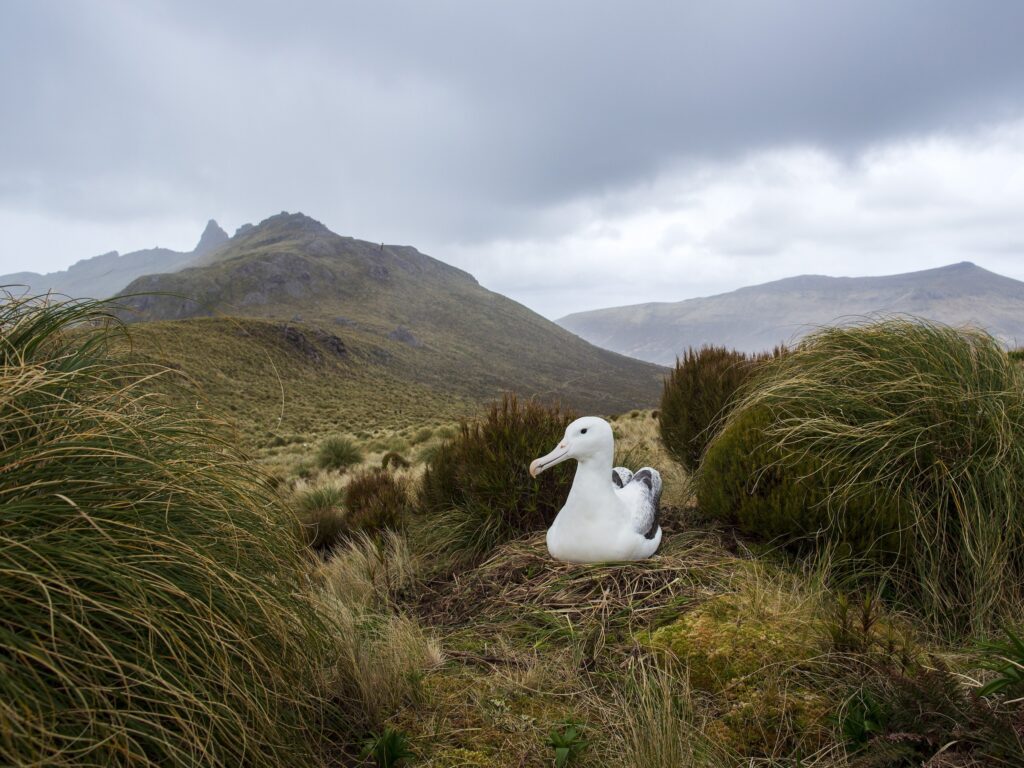
Key Takeaways
- The Southern Royal Albatross is a symbol of marine biodiversity in New Zealand.
- Its impressive wingspan allows it to glide long distances while foraging.
- Human interactions are affecting their breeding success and conservation efforts.
Taxonomy and Classification
The Southern Royal Albatross is an important species within avian taxonomy. Its classification reveals its connections to other birds and its role within the ecosystem.
This section explores the scientific nomenclature and the broader taxonomic hierarchy of this fascinating bird.
Scientific Nomenclature
The Southern Royal Albatross is scientifically named Diomedea epomophora. This name reflects its unique characteristics and helps distinguish it from other albatross species.
The term “Diomedea” comes from Greek mythology and relates to the seabird lineage.
Diomedea epomophora has two recognized subspecies: the Northern Royal Albatross and the Southern Royal Albatross.
Correct nomenclature is key for accurate communication in biology and conservation efforts.
Family and Order
The Southern Royal Albatross belongs to the family Diomedeidae and the order Procellariiformes.
The family Diomedeidae includes various albatross species, known for their large wingspans and seabird adaptations.
The order Procellariiformes encompasses not only albatrosses but also petrels and shearwaters.
Birds in this order are adapted for life at sea, often having specialized skills for foraging and extensive flying abilities.
Understanding their classification helps researchers study evolutionary relationships and ecological roles.
Physical Characteristics
The Southern Royal Albatross is known for its impressive physical features. Its size, wing structure, and coloration play significant roles in its functionality and behavior in the wild.
This section covers the key physical traits that distinguish this species.
Size and Wingspan
The Southern Royal Albatross is one of the largest seabirds in the world. Adult birds can weigh between 6.5 to 12 kg (14 to 26 lbs).
Their wingspan is particularly remarkable, reaching up to 3.5 meters (11.5 feet).
This large wingspan provides excellent gliding capabilities, allowing the bird to cover vast distances over the ocean with minimal energy expenditure.
Their long wings are adapted for dynamic soaring, which is essential for foraging in their vast marine environment.
Plumage and Appearance
The plumage of the Southern Royal Albatross is striking yet functional. Adult birds typically display a predominantly white body with dark gray wings and a distinctive black margin.
Their head is also white, often giving a striking contrast against the darker wings.
Chicks, on the other hand, have a more mottled appearance, which helps them blend into their surroundings.
The change in plumage as they mature is essential for survival, as adults need to be less conspicuous when hunting and avoiding predators.
Biometrics and Differences from Wandering Albatross
In terms of biometrics, the Southern Royal Albatross differs from the Wandering Albatross in several aspects.
While both birds share a large wingspan, the Southern Royal typically has a shorter length, ranging from 100 to 130 cm (39 to 51 inches).
Weight-wise, it is generally lighter than the Wandering Albatross.
The Southern Royal Albatross also exhibits a different bill shape and size, which is more curved compared to the straight, heavier bill of the Wandering Albatross.
These physical distinctions contribute to their differing feeding strategies and habitat preferences.
Habitat and Distribution
The Southern Royal Albatross is known for its unique habitats and extensive distribution across the Southern Ocean. Understanding their breeding islands, feeding grounds, and range of movement is essential to grasp how these magnificent birds thrive in their environment.
Breeding Islands
Southern Royal Albatrosses primarily breed on Campbell Island and Auckland Island.
These islands provide suitable nesting sites due to their rocky cliffs and minimal human disturbance. The breeding season runs from September to December.
Nesting occurs in large colonies, where pairs can raise a single chick each year.
The islands’ geographical location offers protection from harsh weather and predators, which is crucial for the survival of the young.
Feeding Grounds
The feeding grounds of Southern Royal Albatrosses are found throughout the Southern Ocean.
They forage over vast areas, often traveling hundreds of kilometers in search of food.
These birds primarily feed on fish and squid, which are abundant in these nutrient-rich waters.
They utilize their excellent flying skills to glide over the ocean’s surface, searching for schools of prey.
Their feeding habits are influenced by oceanic currents and prey availability, making them effective hunters in their habitat.
Range of Movement
Southern Royal Albatrosses have a broad range of movement extending from New Zealand to the waters around Tasmania.
This range allows them to adapt to changing environmental conditions and locate food sources.
They are known to cover great distances, flying up to 12,000 kilometers in a single voyage.
This capacity to travel long distances is key for their survival, enabling them to find optimal foraging areas year-round.
Behavioral Ecology
The Southern Royal Albatross is known for its unique feeding habits, flight patterns, and reproductive behaviors. Each aspect plays a critical role in its survival and adaptation to the marine environment.
Feeding Habits
Southern Royal Albatrosses primarily feed on fish, squid, and crustaceans.
They use a technique called surface seizing, where they skim the surface of the water to capture prey. This method is efficient for catching smaller fish and marine invertebrates.
During foraging, they cover vast distances, often traveling hundreds of kilometers in search of food.
Their foraging zones are influenced by ocean currents and availability of prey.
Tracking studies show these birds can spend up to 80% of their time flying while searching for food.
Their diet varies with the seasons, reflecting changes in prey abundance. In some cases, they may also scavenge from fishing vessels, taking advantage of human activity.
Flight Patterns
The Southern Royal Albatross is famous for its spectacular flight abilities.
With wingspans that can reach up to 3.5 meters, they are adept at dynamic soaring.
This technique allows them to travel long distances with minimal energy expenditure.
They exploit wind patterns over the ocean, gliding effortlessly while covering vast areas.
This energy-efficient flight helps them find food and migrate between breeding sites.
Tracking data reveals typical flight patterns that include both direct migration routes and more complex foraging paths.
Their impressive flying skills not only aid in hunting but also play a key role in their social interactions.
Reproductive Behavior
Breeding for the Southern Royal Albatross occurs every two years, with a strong pair bond formed between mates.
They engage in elaborate courtship displays, which strengthen this bond.
Nesting typically takes place on isolated islands, providing safety for their young.
The female lays a single egg, which both parents incubate for about 11-13 weeks.
This shared duty ensures that the chick receives constant care during its early development.
Once hatched, the chicks are fed regurgitated food, which is crucial for their growth.
Parental care continues for several months, allowing the chick to gain the strength for its first flight.
These behaviors reflect the strategies that sustain their populations in challenging marine environments.
Conservation Status
The Southern Royal Albatross faces challenges that affect its population and habitat. Understanding the current status is vital for its protection. This section outlines population trends, threats, and conservation efforts related to this species.
Population Trends
The Southern Royal Albatross is currently classified as Vulnerable by the IUCN. Estimates suggest a population of about 15,000 breeding pairs.
While some data indicate stability, there is low confidence in these trends.
Monitoring programs, such as those conducted by BirdLife International, have been essential to gather accurate data on their numbers and breeding success.
Breeding primarily occurs on Campbell Island, with some birds returning to the same nesting sites year after year.
Ongoing research aims to better understand their population dynamics and response to environmental changes.
Threats and Conservation Efforts
Southern Royal Albatrosses encounter various threats that jeopardize their survival.
Bycatch in fisheries is a significant concern, as birds can become entangled in fishing gear. Climate change also affects food availability and breeding success.
Conservation efforts include establishing marine protected areas, like those around South Georgia, which help safeguard critical habitats.
Organizations, including BirdLife International, actively work to reduce bycatch through sustainable fishing practices and increased awareness.
These efforts are vital for improving the conservation status of this species.
Organizations and Agreements
Several organizations play crucial roles in the conservation of the Southern Royal Albatross.
The IUCN continues to assess the species’ status and promote awareness of conservation challenges.
BirdLife International leads initiatives to protect seabirds and their habitats through research and conservation programs.
International agreements, such as the Agreement on the Conservation of Albatrosses and Petrels (ACAP), aim to mobilize global resources for these birds.
Collaboration among countries ensures that various threats are addressed, helping to improve the outlook for the Southern Royal Albatross.
Interaction with Humans
The Southern Royal Albatross interacts with humans in various ways, particularly through tourism, effects from the fishing industry, and wildlife imagery. Each aspect contributes to understanding how human activities impact this magnificent bird.
Tourism
In areas like Kaikoura, the Southern Royal Albatross attracts tourists interested in wildlife observation.
Tour operators offer boat trips for albatross watching, allowing visitors to experience these majestic birds up close.
Tourism can have both positive and negative effects.
Responsible wildlife tourism promotes conservation awareness. However, increased human presence may disturb breeding sites and alter natural behaviors.
Guidelines are often in place to minimize disturbance, ensuring that visitors enjoy the experience while protecting these birds.
Fishing Industry Impact
Fishing activities significantly affect the Southern Royal Albatross.
Bycatch is a concern, as birds can become accidentally caught on hooks and lines during fishing operations. This results in injury or death.
Moreover, competition for food arises between fishermen and albatrosses.
As fish stocks decline due to overfishing, albatrosses may struggle to find adequate food sources.
Initiatives like seabird-friendly fishing practices aim to mitigate these impacts and promote sustainable fishing methods.
Imagery and Licensing
The Southern Royal Albatross is a popular subject in wildlife photography and art. When using their images, understanding the licensing types is crucial.
Those seeking to use photos for commercial purposes will need a royalty-free or rights-managed license.
Royalty-free images allow for wider use with a one-time fee, while rights-managed images are priced based on specific usage terms.
Editorial images can be used in news articles or educational content without the same requirements.
Proper licensing ensures that photographers are credited and compensated for their work while allowing audiences to connect with this remarkable species.
Frequently Asked Questions
The Southern Royal Albatross is an impressive bird known for its large wingspan and unique habitat. Many facts about this species highlight its ecological role and characteristics.
What is the wingspan of the Southern Royal Albatross?
The wingspan of the Southern Royal Albatross can reach up to 12 feet. This makes it one of the largest wingspans of any bird species.
Where can you find the natural habitat of the Southern Royal Albatross?
The Southern Royal Albatross primarily resides around the sub-Antarctic islands. They are commonly found near the Campbell Island and the Antipodes Islands in New Zealand.
Is the Southern Royal Albatross considered an endangered species?
Yes, the Southern Royal Albatross is classified as vulnerable. Its population is threatened by factors such as habitat loss and fishing practices.
How does the Southern Royal Albatross differ from the Northern Royal Albatross?
The Southern Royal Albatross is often larger than its northern counterpart. Additionally, their breeding grounds and migration patterns vary significantly.
What is the average speed of a Southern Royal Albatross in flight?
In flight, the Southern Royal Albatross can reach average speeds of around 50 miles per hour. This speed helps it cover vast distances quickly.
What taxonomic class do Southern Royal Albatrosses belong to?
Southern Royal Albatrosses belong to the class Aves. This class includes all bird species. It highlights their unique adaptations and behaviors.


